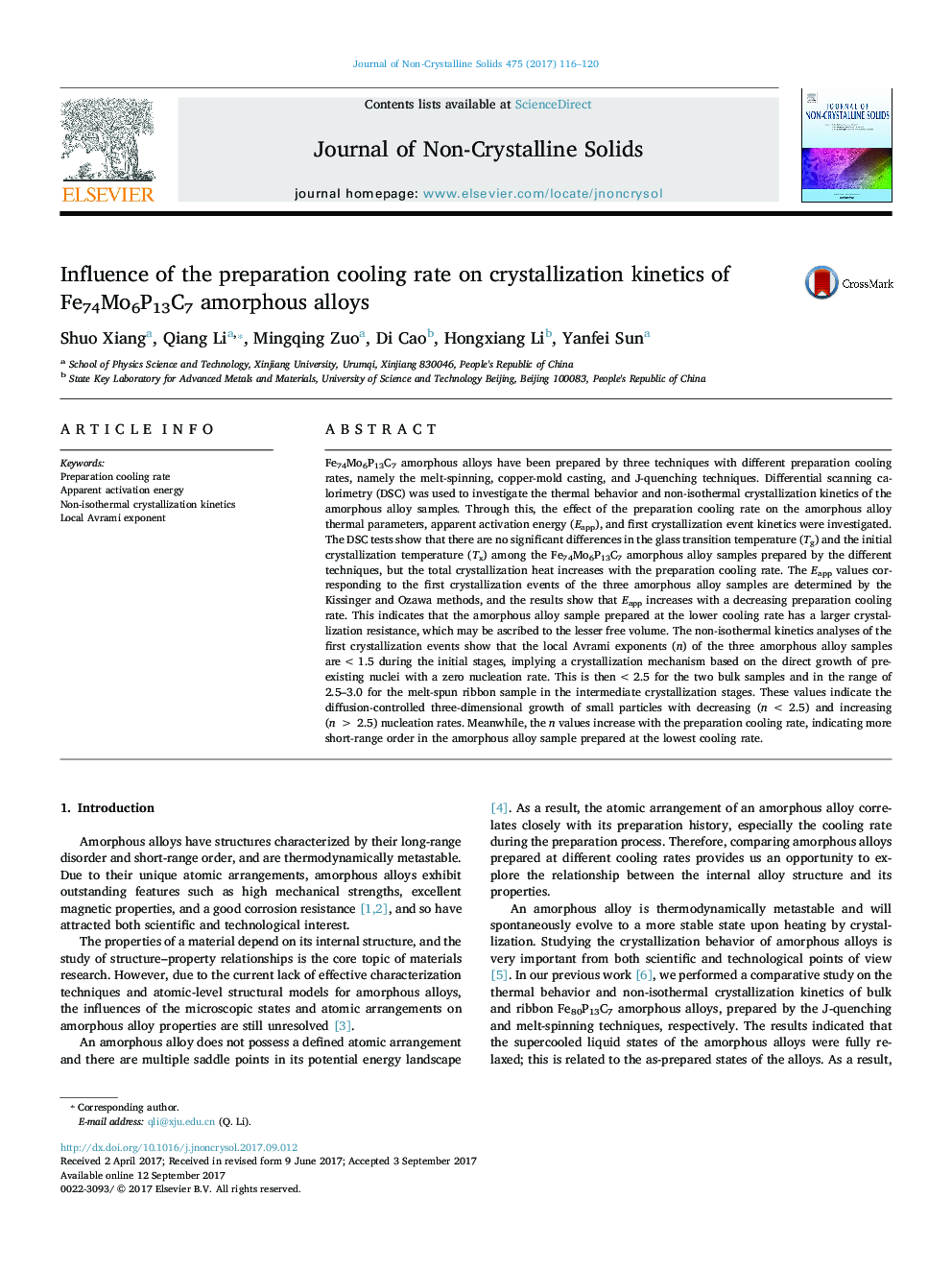| Article ID | Journal | Published Year | Pages | File Type |
|---|---|---|---|---|
| 5441037 | Journal of Non-Crystalline Solids | 2017 | 5 Pages |
Abstract
Fe74Mo6P13C7 amorphous alloys have been prepared by three techniques with different preparation cooling rates, namely the melt-spinning, copper-mold casting, and J-quenching techniques. Differential scanning calorimetry (DSC) was used to investigate the thermal behavior and non-isothermal crystallization kinetics of the amorphous alloy samples. Through this, the effect of the preparation cooling rate on the amorphous alloy thermal parameters, apparent activation energy (Eapp), and first crystallization event kinetics were investigated. The DSC tests show that there are no significant differences in the glass transition temperature (Tg) and the initial crystallization temperature (Tx) among the Fe74Mo6P13C7 amorphous alloy samples prepared by the different techniques, but the total crystallization heat increases with the preparation cooling rate. The Eapp values corresponding to the first crystallization events of the three amorphous alloy samples are determined by the Kissinger and Ozawa methods, and the results show that Eapp increases with a decreasing preparation cooling rate. This indicates that the amorphous alloy sample prepared at the lower cooling rate has a larger crystallization resistance, which may be ascribed to the lesser free volume. The non-isothermal kinetics analyses of the first crystallization events show that the local Avrami exponents (n) of the three amorphous alloy samples are < 1.5 during the initial stages, implying a crystallization mechanism based on the direct growth of pre-existing nuclei with a zero nucleation rate. This is then < 2.5 for the two bulk samples and in the range of 2.5-3.0 for the melt-spun ribbon sample in the intermediate crystallization stages. These values indicate the diffusion-controlled three-dimensional growth of small particles with decreasing (n < 2.5) and increasing (n > 2.5) nucleation rates. Meanwhile, the n values increase with the preparation cooling rate, indicating more short-range order in the amorphous alloy sample prepared at the lowest cooling rate.
Related Topics
Physical Sciences and Engineering
Materials Science
Ceramics and Composites
Authors
Shuo Xiang, Qiang Li, Mingqing Zuo, Di Cao, Hongxiang Li, Yanfei Sun,
